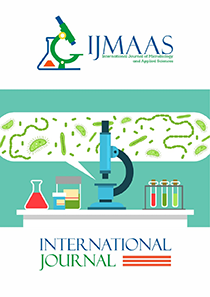Plasmid Profile of Multidrug Resistant Staphylococcus aureus and Pseudomonas aeruginosa Isolated from Urine Specimens in South-South, Nigeria
Vol 3, Issue 1, 2024
KEYWORDS
Urinary tract infections, plasmid profile, S. aureus, P. aeruginosa, multidrug-resistant (MDR) bacteria.
Abstract
Urinary tract infections (UTIs) continue to be the most prevalent type of infections affecting all age groups worldwide. The primary objective of this study was to ascertain the plasmid profiles and multidrug resistance (MDR) pattern of Staphylococcus aureus and Pseudomonas aeruginosa among female Students at Federal University Otuoke Bayelsa State, Nigeria. A total of fifty (50) urine specimens were collected in sterile containers and conventional microbiological methods were used for analysis. Antibiotic susceptibility testing was conducted by standard laboratory guidelines. Among the 50 examined, 28(56%) exhibited significant bacteriuria, out of which 20 had cases of S. aureus and 8 cases of P. aeruginosa. Statistical analysis revealed no significant difference (P>0.05) in the frequency of occurrence between S. aureus and P. aeruginosa. S. aureus exhibited high resistance to norfloxacin, amoxil, and ampiclox but was susceptible to ciprofloxacin, gentamicin, streptomycin, and levofloxacin. While P. aeruginosa displayed high resistance to ampicillin, nalidixic acid, and augmentin showing susceptibility to tarivid, ciprofloxacin, and septrin. Notably, 18(64.29%) isolates were resistant to more than two distinct antibiotic classes. Within this group of MDR isolates, 35.72% were identified as S. aureus and 28.57% were P. aeruginosa. Following curing, both S. aureus and P. aeruginosa became sensitivity to majority of antibiotics to which they had previously exhibited resistance. However, P. aeruginosa remained resistant to azithromycin, cefpodoxime, and amoxicillin-clavulanic acid. S. aureus and P. aeruginosa exhibited the highest sensitivity of 25mm and 23mm zones of inhibition respectively for Cefotaxime. These isolates were found to carry plasmid for MDR at 9466bp for S. aureus and P. aeruginosa respectively suggesting plasmid involvement in drug resistance within the majority of UTIs. Consequently, it is imperative to promote proper hygiene among individuals, monitor antibiotic resistance patterns, and raise public awareness through enlightenment campaigns.
Current: Vol 3, Issue 1, 2024

Call for papers
The International Journal of Microbiology and Applied Sciences warmly welcome your valuable articles for publication.
